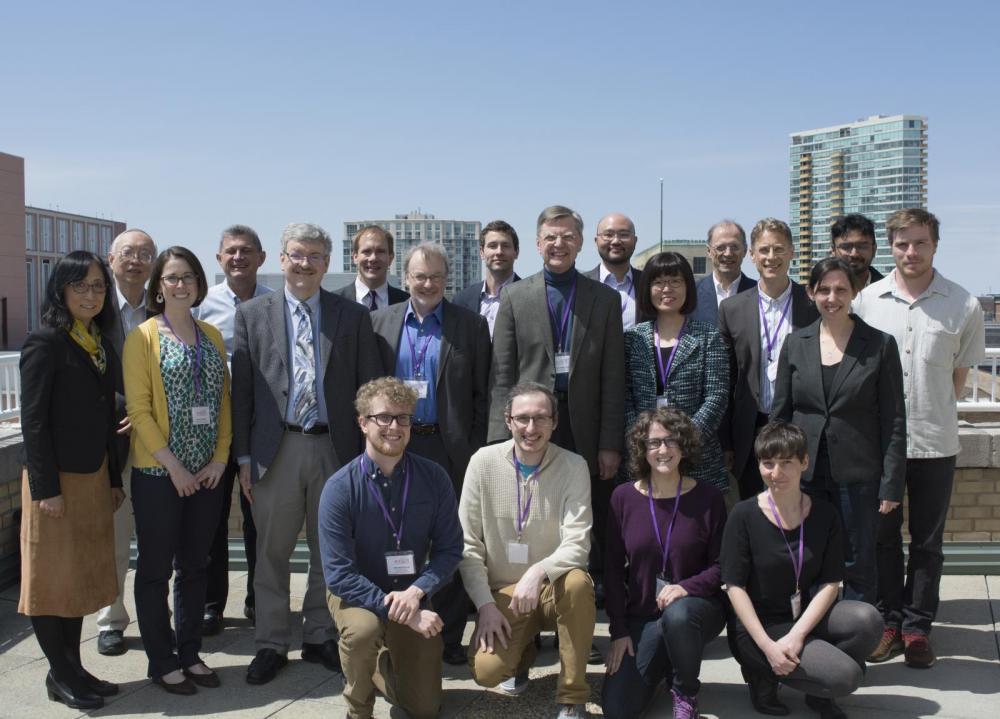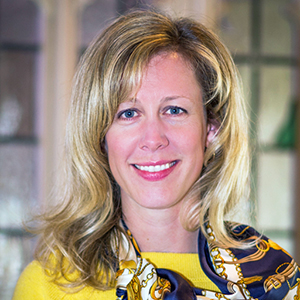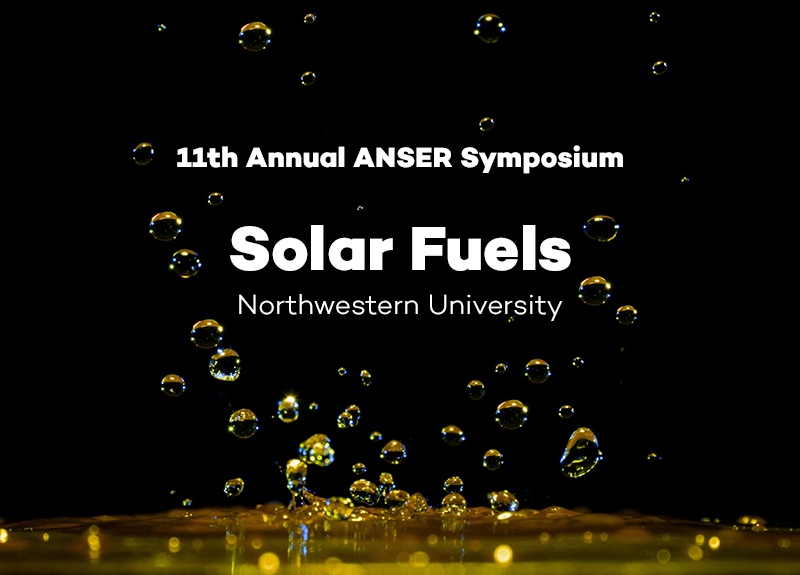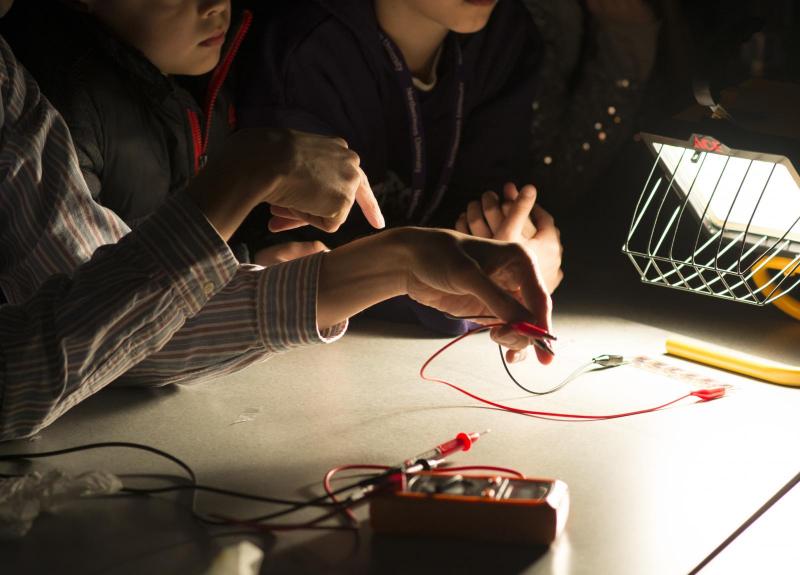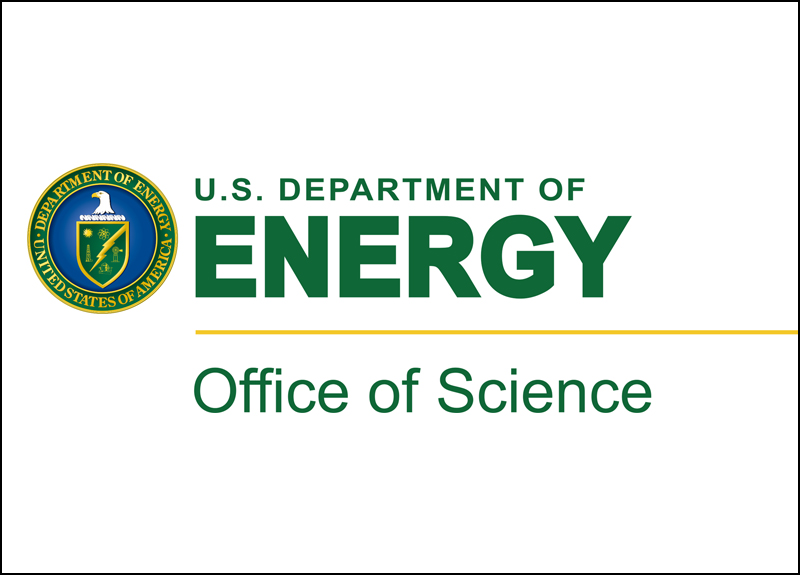Energy is high as members of the Argonne Northwestern Solar Energy Research Center (ANSER) celebrate nine years of research and development this month. The collaboration between leaders from chemistry, materials science, and related disciplines has set the stage for a bright future built on achievement in education, collaboration, and discovery.
The work of ANSER delves deep into the interactions between light and matter to reveal new information about the ways associated molecules and atoms work, and their potential to perform in systems to create energy from some of the planet’s most abundant natural resources. Central funding for ANSER has come from a Department of Energy (DOE) Energy Frontier Research Center (EFRC) grant.
While the outputs that have come from ANSER have tremendous potential—from producing fertilizer for agriculture to generating renewable energy—this academic initiative has maintained a focus on the discovery and dissemination of new information.
Under the leadership of ANSER Director Michael R. Wasielewski, the partnership with the Department of Energy’s (DOE) Argonne National Laboratory (ANL) has grown to include collaborators from a number of esteemed institutions across the country.
“Collaboration has been central to the success of ANSER,” said Wasielewski, who also serves as the Executive Director of the Institute for Sustainability and Energy at Northwestern.
“Insight from diverse experts and access to specialized laboratories and equipment has enriched the discovery process and opened the doors to both expected and unexpected findings that we have shared with the world.”
Wasielewski, the Clare Hamilton Hall Professor of Chemistry at Northwestern, has ensured the ANSER program include a vibrant academic exchange. Nearly 90 leaders in the field have spoken on site at the Evanston campus, and an annual symposium has brought nearly 70 more speakers to share state-of-the-art developments with thousands of students, professors, and collaborators.
“We’ve had hundreds of researchers pursuing ideas that no one has ever done in the history of humankind, and in a way that is open and transparent,” explained Dick Co, research professor of chemistry at Northwestern and ANSER’s Director of Operations and Outreach. “We produce knowledge and we publish it, we share it. Scientists and students from around the globe have learned it and internalized it as a part of their education,” said Co. ANSER’s nearly 500 publications have been cited over 23,000 times already, and that number is growing exponentially year after year.
A scientific ‘gold rush’ was launched after two Northwestern professors and ANSER principal investigators (PIs), Mercouri Kanatzidis and Bob Chang, put their heads together in 2012 to utilize perovskites in high-performing 3rd generation solar cells in a way that is cheaper and easier to process than current incumbent technologies. In 2014, the PIs went on to remove the toxic lead compound from the perovskite solar cells.
Following those two groundbreaking discoveries, the story continued in 2016 at Argonne under the leadership of chemist and ANSER PI Alex Martinson (PhD Physical Chemistry ‘08). Martinson’s expertise in atomic layered deposition (ALD) led him to develop a perovskite solar cell in specific ways so as to make it water resistant, opening the doors to broader usage.
In another ANSER collaboration, the Wasielewski Group provided expertise to elucidate the mechanisms on how iridium performs as a catalyst for water oxidation. Also called water splitting, water oxidation rearranges atoms within water into two gases—oxygen and hydrogen. The hydrogen is then available for use as an energy source. Working with partners at Yale University—where the famous iridium catalyst was discovered, and ANL, they pioneered a real-time method for evaluating the chemical structure of the process.
In addition, recent advances have been made in the conversion of nitrogen—an abundant gas filling 80 percent of the air, into ammonia for use as an agricultural fertilizer. The team expects that nitrogen can be transitioned into a useful resource for this or other purposes when coupled with the right catalysts. In future evolutions of their work, collaborators are eager to discover how to improve and control related processes and potentially find associated new materials and molecules.
In all, the work of ANSER has been multi-dimensional and deeply impactful. A better understanding of our universe has been revealed with each discovery, whether the findings lay a foundation for future research or build a bridge for industry to bring solutions to the marketplace. “We’ve pushed back the frontiers of science and trained hundreds of students over the years, and I think that’s very exciting,” remarked Co.
The ANSER anniversary provides renewed curiosity for writing the manual for nature and bringing new understandings to world. Looking ahead, the researchers are eager to advance ongoing projects and timely new initiatives into the hands of the scientists of tomorrow.
Photo: 11th Annual ANSER Symposium (left to right): Front row: Sam Amsterdam, subtask coordinator— Northwestern; Tom Fauvell, subtask coordinator—Northwestern (NU); Katherine “Katie” Fisher, subtask coordinator—Yale; Micaela Matta, subtask coordinator—NU. Second row: Lin Chen, ANSER principal investigator—NU & Argonne National Laboratories (ANL); Jillian L. Dempsey, speaker; R. Morris Bullock, speaker; James McCusker, speaker; Michael R. Wasielewski, Director of ANSER—NU; Kyoung-Shin Choi, speaker; Victor Batista, ANSER principal investigator—Yale, Joe Christensen, subtask coordinator—NU. Back row: Bob Chang, ANSER principal investigator—NU; Mike Pellin, ANSER principal investigator—ANL; Shane Ardo, speaker; Alex Martinson, ANSER principal investigator—NU; Dick Co, ANSER Director of Operations and Outreach—NU; George Schatz, ANSER principal investigator—NU; Subhajyoti Chaudhuri, ANSER researcher—Yale.



